The name of the world-famous fast food dish that celebrated its 125th anniversary on July 27 refers to Germany’s second-largest city, yet this product has no direct connection to Hamburg. Where was the hamburger invented, what is the true age of this closed sandwich, and can an invention with an American patent be considered a shared heritage?
Official Recognition
Not every edible product can boast its own birthday, but the hamburger has an official date: July 27, 1900. On that day, a resident of New Haven, Connecticut, Louis Lassen, first sold a traditional German beefsteak with sauce and sandwiched between two round buns at his lunch wagon, Louis’ Lunch. This filling variation became the innovation that allowed the Danish immigrant, who arrived in the “land of opportunity” in the 1880s, to patent the sandwich with a hot meat patty and vegetables. However, the concept of such food is not unique and thus remains “nobody’s property.”
In reality, this American culinary event has a long history. While the creator of one of the early fast-food formats is considered the “father” of the hamburger, similar dishes existed even before his patent was filed. This combination of ingredients has as many international and regional variations as the history of the hamburger itself—there are numerous versions of its origin. Ultimately, none of the contenders for the title of “inventor” of the hamburger holds exclusive rights to a culinary idea that has undergone a complex development and dissemination process, continuing to remain widely accessible. Today, hamburgers are ubiquitous fast food and an international dish on restaurant menus.
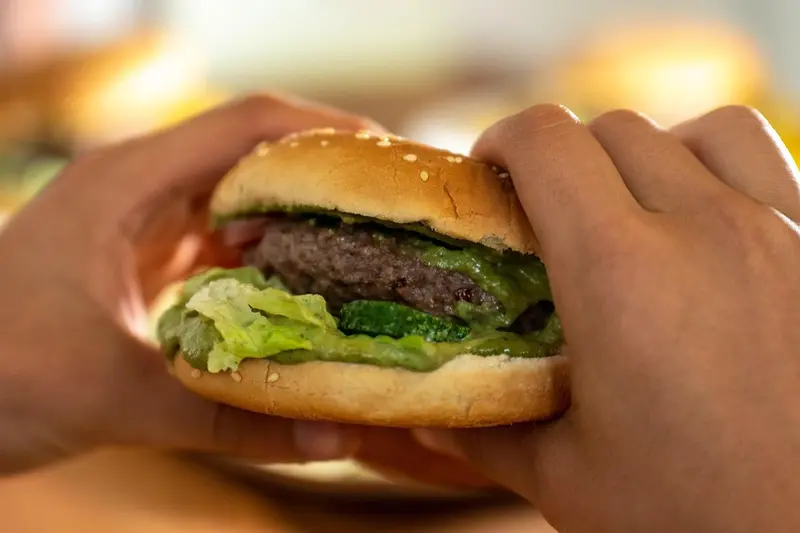
Predecessor of the Patty
In a sense, the first hamburger was created by ancient Scythians: it is believed that nomads were eating beef placed between two bread cakes as early as the 8th century BC. In fact, this was a historical predecessor to the closed sandwich or the dish known as hamburger (shortened to burger). The Chinese also claim priority for the burger idea: they assert that they were the first to eat meat placed between two rice cakes. Additionally, a recipe for fried “Hamburg sausage” was cited in Hannah Glass’s cookbook in 1758, served on toasted bread. This type of sausage was known in Hamburg as Rundstück warm and was familiar to immigrants.
A famous legend tells of a Hamburg merchant who, in 1800, noticed the custom of Tatar nomads storing meat under their saddles in horse-drawn carts. During the ride, the meat would inadvertently be pounded and softened. Upon returning from his journey, the merchant suggested to his cook to pound the meat before cooking and serve it between two slices of bread. Thus, the so-called “Hamburg meat” appeared in Europe, and its recipe soon made its way to the United States. The “Hamburg steak” served between two slices of bread was offered to passengers of the Hamburg America Line, which transported the first German immigrants to America. By 1834, a New York restaurant was already serving a “hamburger”—but not with a patty, rather with a beefsteak.

“Outstanding Favorite”
In 1884, the Boston Journal mentioned the “Hamburg steak.” The Chicago Daily Tribune wrote in July 1896 about the “sandwich mobile” and “an outstanding favorite for just five cents” – the “Hamburg sandwich,” which was prepared with minced meat on a gasoline stove “while you wait.” Sandwiches with “Hamburg steak” were advertised in the American press since the 1890s. The invention of hamburgers has been attributed to Louis Lassen, Charlie Negrin, Oscar Weber Bilby, Fletcher Davis, Frank and Charles Menches, as well as directly to the gastronomer from Hamburg, Otto Kuase.
One thing seems certain: the first hamburger with the modern composition of ingredients (a round bun, patty, tomato sauce, and lettuce) was sold in 1900 in New Haven by Louis Lassen, who also decided to add vegetables to his fast food. When the hamburger gained widespread recognition at the 1904 World’s Fair in St. Louis, the New York Tribune called it “an innovation from a fair food vendor.” Yet, several experts support the idea of anonymous authorship, arguing that the spread of the hamburger at the World’s Fair was handled by small vendors, and this idea could have emerged simultaneously among various food sellers across the country.
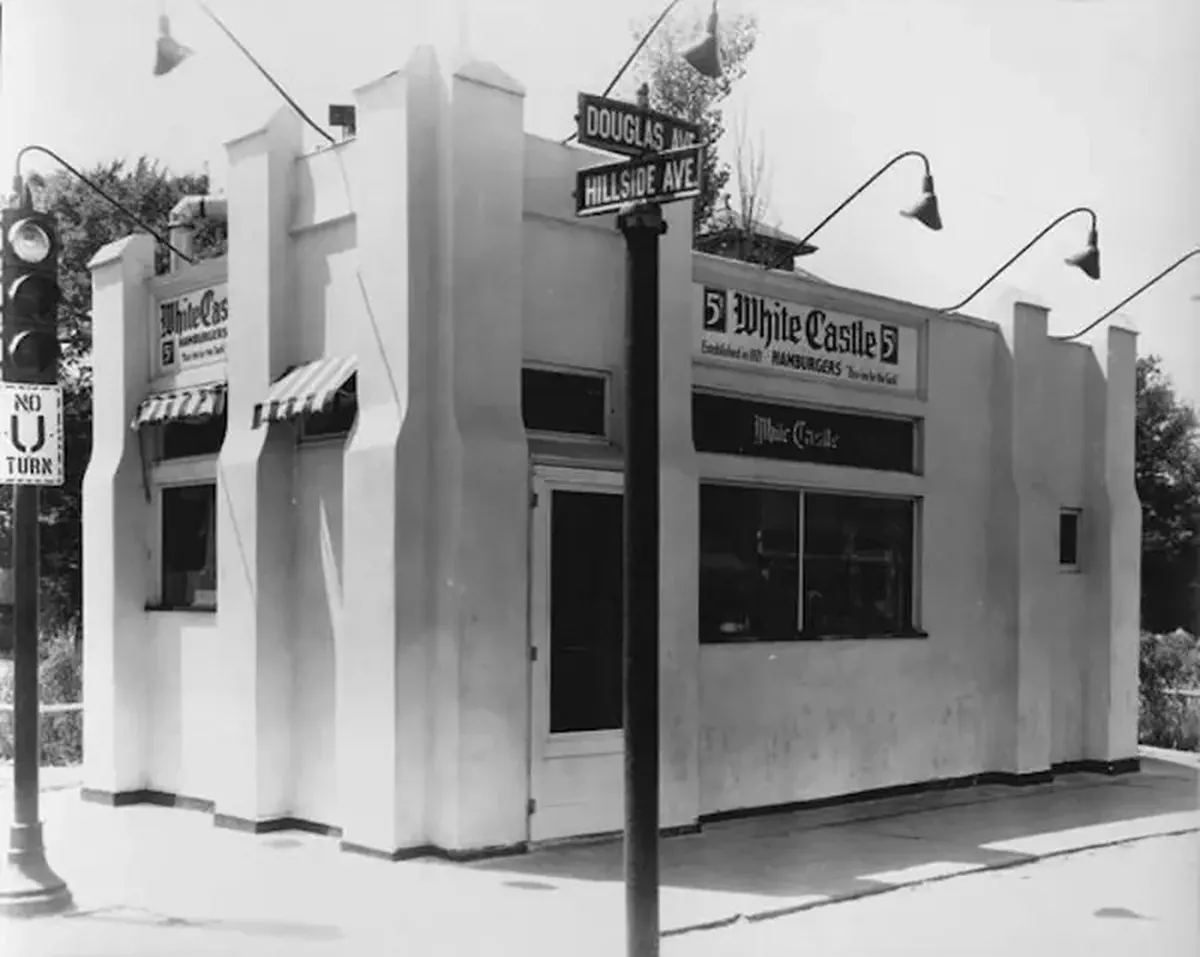
The People’s Choice
In 1921, the hamburger entered a new phase of its rich history when Kansas chef Walter Anderson, with the help of investor Billy Ingram, opened the world’s first hamburger restaurant. At the White Castle Hamburger establishment, this dish formed the basis and specificity of a new menu for America. After an impressive culinary debut in the early 20th century, it took the hamburger another three decades to become the most popular fast food in the U.S., convincing Americans to prefer it over Italian , fried chicken, and . This “people’s choice” was further aided by… the development of the automotive industry.
Mass automobile ownership in the U.S. led to the opening of roadside burger cafes that captivated busy Americans always on the go. From one of these roadside “fast food” cafes began the story of the renowned restaurant chain in 1948. The long-standing popularity of McDonald’s hamburgers is a result of luck, entrepreneurship, and a savvy business strategy. Above all, it reflects the new demands for food organization within modern culinary culture. McDonald’s sells 75 burgers every second. The fast-food chain sells 550 million Big Macs annually—the most sold hamburgers in the world.

For Every Appetite and Wallet
While McDonald’s hamburgers are round (as are most American burgers), fast food restaurants like Wendy’s sell square hamburgers. They are usually cooked on a flat hot surface, while Burger King uses a gas flame grill for its products. Uniformly thick patties are delivered to restaurants or stores in frozen form by manufacturers. Only a few restaurants (for example, the establishments of renowned chef Bobby Flay, Bobby’s Burger Palace) offer gourmet hamburgers made with premium meats or cheeses, along with unique toppings and .
The largest hamburger in the world costs nearly five hundred dollars ($499) and weighs over 84 kilograms (84.3 kg). This is not a record-setting parameter but a permanent offering at a restaurant in Southgate, Michigan. The order takes half a day—about 12 hours—to prepare. The giant burger named “Absolutely Ridiculous Burger” appeared on the menu of Mallie’s Sports Grill & Bar in 2009. In 2012, the restaurant Serendipity prepared the world’s most expensive hamburger—the Extravagant burger, priced at $295, which made it into the Guinness Book of Records. Hamburgers made by Americans from ground beef in home kitchens also differ in taste and quality from mass-produced products.
Global Spread
And not only in America are hamburgers often the food choice for picnics or parties, grilled outdoors, and served as a quick dinner. Globally, over 100 billion burgers are consumed each year—about 9 kilograms per average person on the planet. In France, according to government analytics from 2012, 14 hamburgers are consumed per person annually—ranking second in Europe (only surpassed by the British) and fourth in the world. A 2013 study found that 75% of traditional French restaurants have at least one type of hamburger on their menu, and for a third of them, the burger has become the leading item, surpassing fish and ribs.
In Mexico, hamburgers are served with fried ham and cheese placed on top of the meat patty (sometimes bacon is grilled alongside the beef patty). The fillings in a Mexican hamburger include , chopped onions, , lettuce, and jalapeños, with ketchup, mustard, and mayonnaise as sauces. In Japan, chain restaurants like MOS Burger, First Kitchen, and Freshness Burger serve a traditional hamburger—a local rice burger with a rice bun and seafood. In the USSR, as early as the 1930s (long before the opening of the McDonald’s chain in 1990), hamburger production was launched after acquiring equipment and technology from Americans.
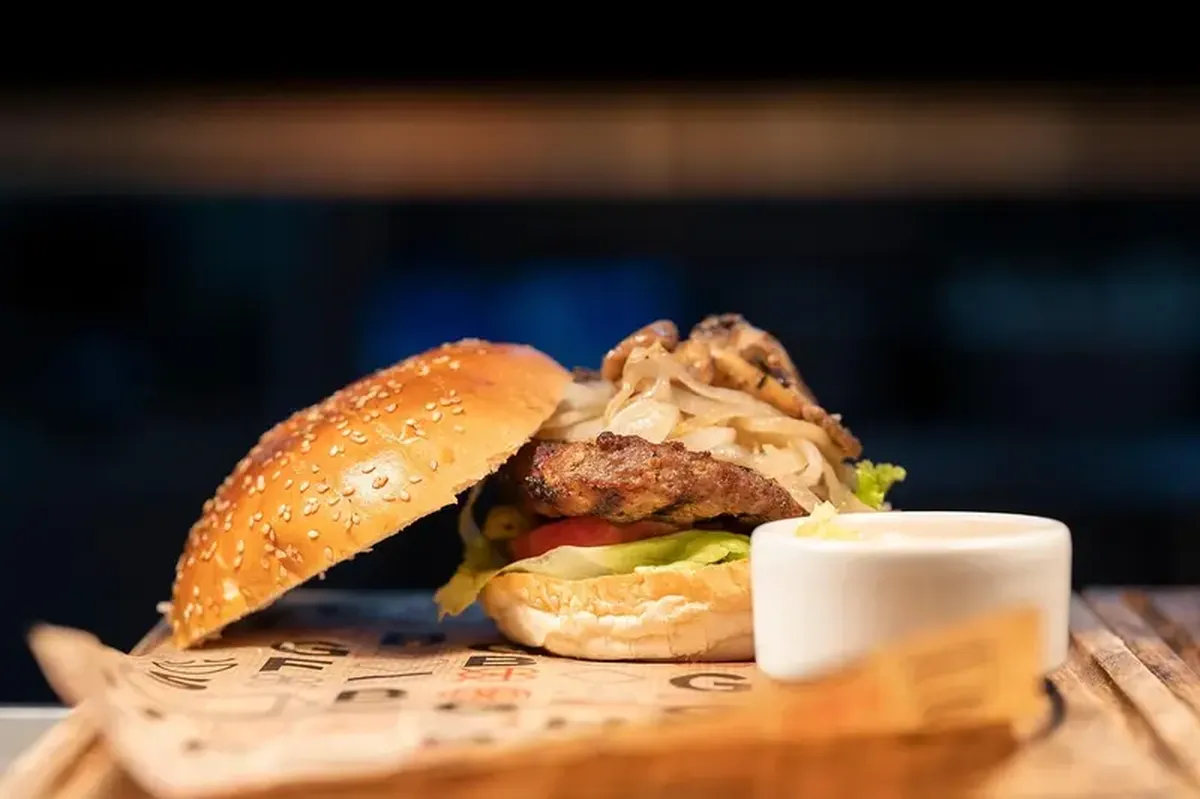
What’s the Difference Between a Hamburger and a Cheeseburger?
To avoid confusion, let’s clarify what we mean by hamburger, burger, and cheeseburger. While a hamburger is prepared according to a specific recipe (usually a beef patty between halves of a bun, with the addition of lettuce, , tomatoes, and sauce), a burger has a less defined meaning and can include various fillings: chicken (chicken burger), fish (fish burger), or cheese (cheeseburger). This is the semantic difference between a hamburger and a burger. A cheeseburger is a meat burger with the addition of cheddar cheese. A fish burger contains a fish patty and some original components—like pâté or capers. The base of a chicken burger is a chicken patty or chicken nuggets (fried pieces of fillet in a crispy coating).
A “Hawaiian” burger contains pieces of and teriyaki (a Japanese sweet-salty sauce with a glossy texture). The “Caesar” burger is named after the eponymous sauce made from olive oil, egg yolks, Parmesan cheese, mustard, , anchovies, and lemon juice. The “black” burger comes with a bun colored with food dye—made from activated charcoal or squid ink. There is no hamburger without meat, but there can be a vegetarian burger (with beans, vegetables, , and soy patties). While a hamburger is the classic, minimalist burger recipe, in a burger, the chef’s imagination knows no bounds. And it is the burger that is the most popular fast food in the world.
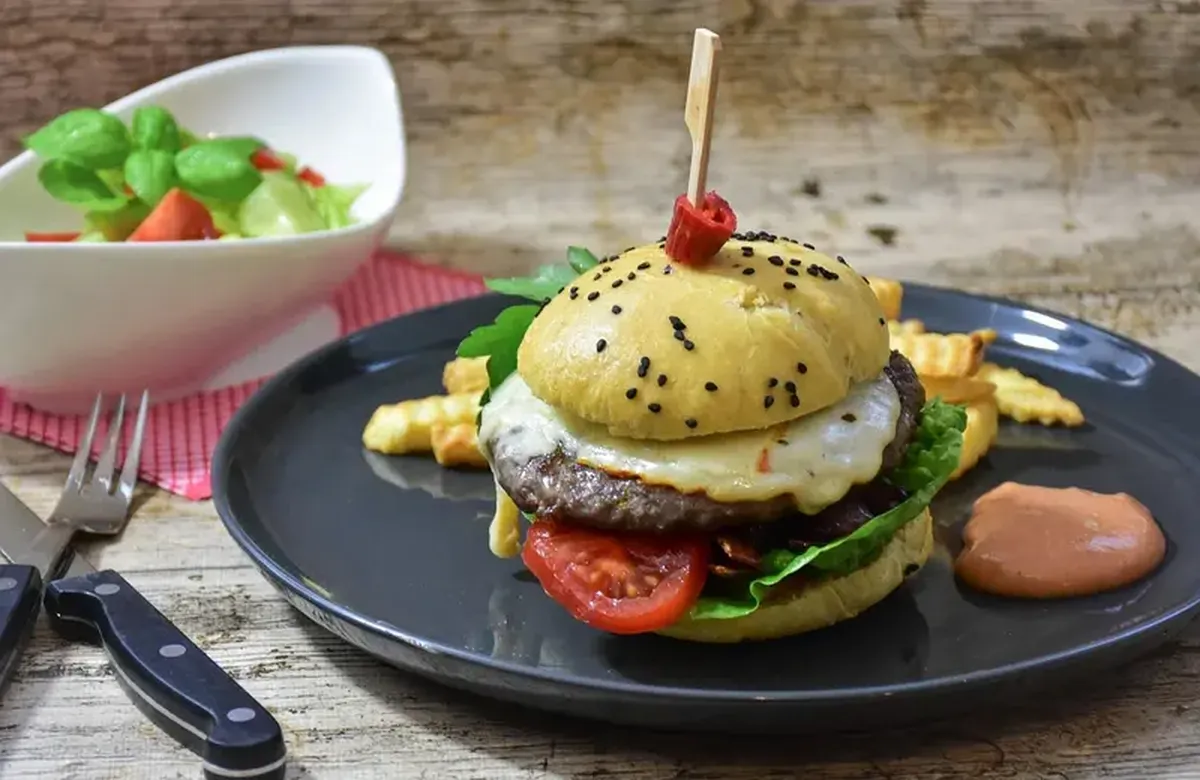
Homemade Hamburger
In various culinary cultures, the hamburger is associated with a closed sandwich made from minced meat prepared from different types of meat. While the classic recipe calls for beef, the “Buffalo” burger contains buffalo meat. Other meats such as venison, bison, moose, lamb, kangaroo, turkey, chicken, salmon, shrimp, or portobello mushrooms can also be used. In the UK, there is no word for “patty”; the term “burger” is used to refer to minced meat and products made from it. There is even a cake-burger—a stylized dessert made from brown chocolate sponge, fruits, marmalade, fondant, mousse, and creams that imitate the appearance and structure of a traditional hamburger.
Since there is no single composition or universal way to prepare a burger, ingredients can be selected based on the tastes and preferences of the cooks. Round hamburger buns (sesame-seeded products are usually sold in packs of several) are needed. A homemade hamburger can be prepared either with self-made minced meat or with frozen hamburger patties. Frozen semi-finished products do not require baking. They simply need to be thawed for six hours at a temperature of +2 to +6°C, and before consumption, heated for about two minutes in an 800-watt microwave.
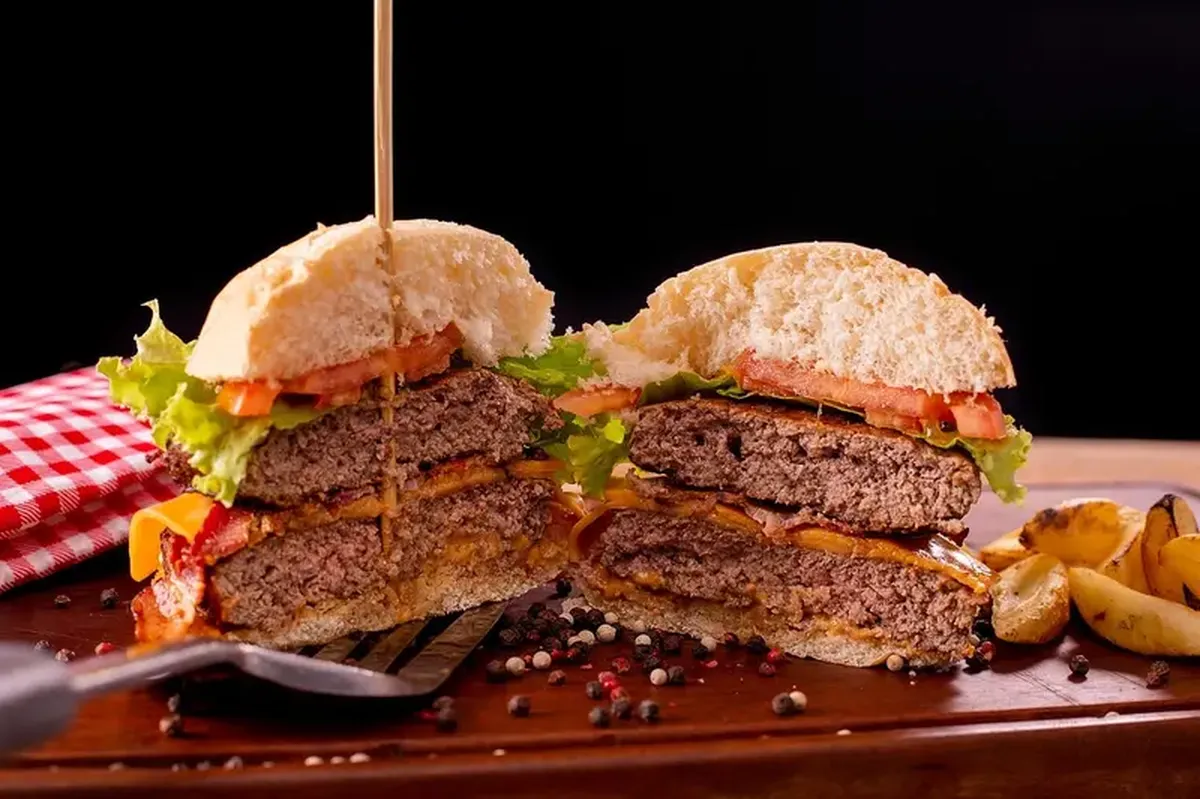
Hamburger Recipe
When preparing hamburgers at home, it is important to consider that not only the ingredients but also the buns can vary. Hamburger buns come in different sizes (standard or mini), colors (light, dark, or black), and types of flour (wheat, rye, and potato), with or without additives (sesame or grains).
Option 1
Place a thawed chicken patty for the hamburger on the bottom half of the bun, add cheese, lettuce, sliced pickles, and “Burger” sauce, then cover the ingredients with the top half of the bun.
Option 2
According to the classic hamburger recipe, place a beef patty on the bottom half of the bun, add cheese, a lettuce leaf, pickles, and “American” sauce. Cover the filling with the top half of the bun.
Serve the homemade hamburger hot. Classic French fries or country-style fried potatoes, as well as grilled vegetables or a fresh vegetable salad, can be served as a side dish.
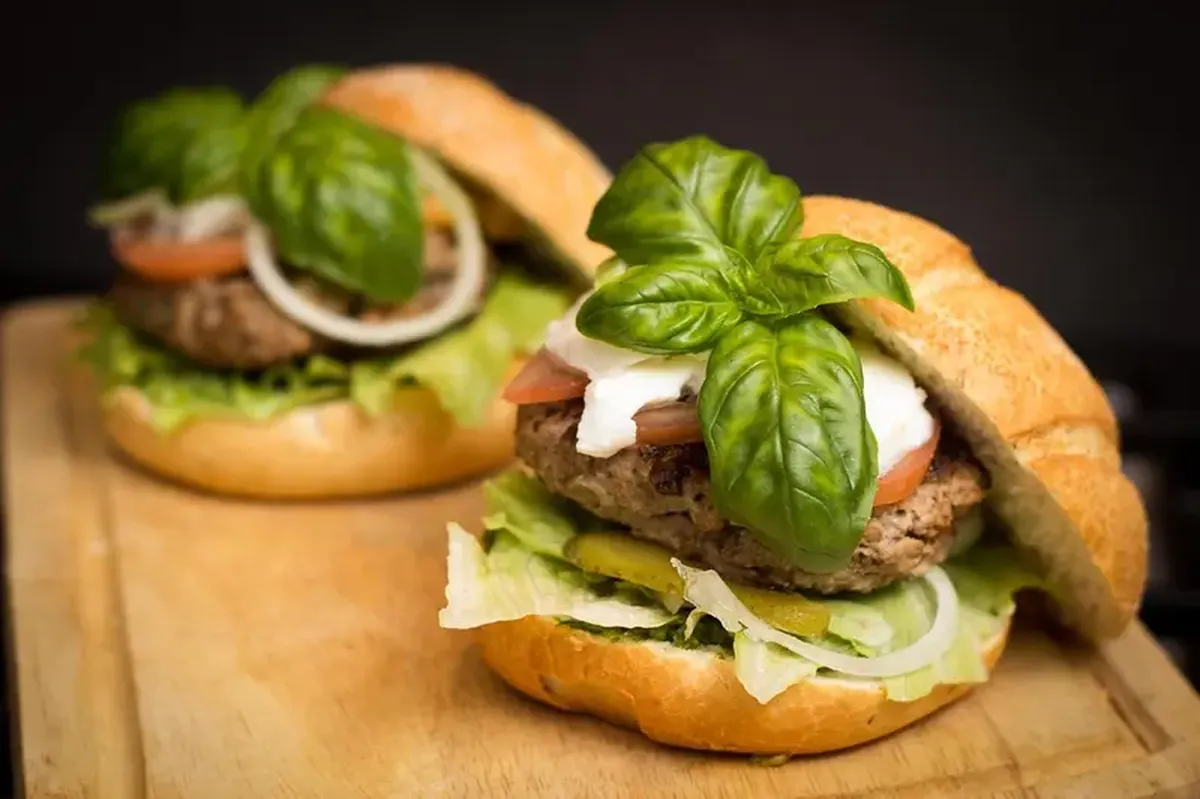
Option 3
For those unafraid of culinary creativity, you can prepare a hamburger at home not in a simplified way, but in a full-fledged manner.
Ingredients: burger buns – 10 pcs.; beef – 1 kg; beef fat – 150 g; sliced processed cheese – 20 pcs.; iceberg lettuce – half a head; tomatoes – 2 pcs.; pickles – 10 pcs.; red onions – 2 pcs.; ketchup – 2 tablespoons; mayonnaise – 2 tablespoons; mustard – 1 tablespoon; butter – 100 g; vegetable oil – 100 ml; black pepper – 1 teaspoon; salt – 1 teaspoon.
Finely chop the beef with the beef fat and pass it through a meat grinder. Season the minced meat with salt and pepper. Mix and form ten flat patties, then place them in the refrigerator for half an hour.
Cut the hamburger buns in half and toast them in butter until golden brown.
Prepare the sauce by mixing with mustard.
Remove the patties from the refrigerator and fry them for a few minutes on one side in a preheated pan with oil, pressing down with a spatula.
Flip the patties and place a slice of processed cheese on the toasted side. Cook the bottom of the patty.
Assemble the hamburgers as follows: on the bottom halves of the buns smeared with mayonnaise-mustard sauce, place thin rings of sliced onion, then the sliced pickles, followed by the patty with cheese, a slice of tomato, and a lettuce leaf.
After spreading ketchup on the top halves of the buns, cover the hamburger fillings with them.
After trying all three methods, you can confirm that enjoying the taste can be just as valuable as the time saved on fast food.
